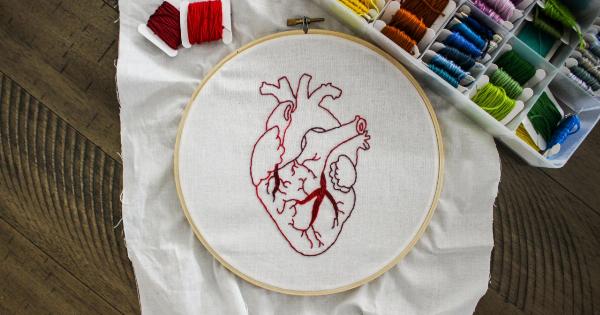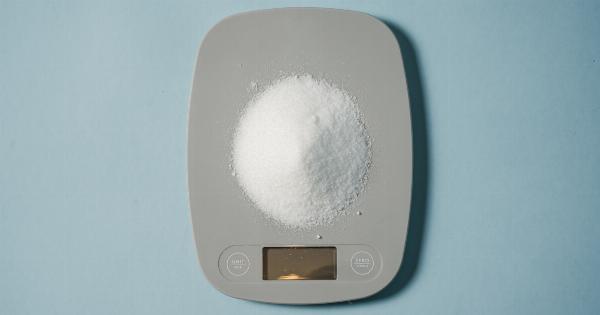Diabetic ulcers are a common complication of diabetes that can have severe consequences.
These ulcers typically develop on the feet and legs of individuals with diabetes and often go unnoticed until they become infected or lead to more serious health issues. In this article, we will explore the life-threatening dangers of diabetic ulcers and discuss the importance of early detection and proper management.
What are Diabetic Ulcers?
Diabetic ulcers are open sores or wounds that occur in individuals with diabetes. They primarily develop due to the combination of reduced blood flow and nerve damage, which are common complications of the disease.
Diabetes affects the body’s ability to regulate blood sugar levels, leading to high levels of glucose in the blood. Over time, this can damage blood vessels and nerves, particularly in the extremities.
When blood flow is impaired and nerves are damaged, individuals with diabetes may not feel pain or other sensations in their feet and legs. This lack of sensation can result in minor cuts, blisters, or injuries going unnoticed.
As a result, these wounds can worsen and develop into ulcers.
The Dangers of Diabetic Ulcers
Diabetic ulcers pose various life-threatening dangers, which make proper management crucial for individuals with diabetes. Some of the significant dangers associated with diabetic ulcers include:.
Infection
Ulcers create an open pathway for bacteria to enter the body. Without proper intervention, infection can set in and spread rapidly.
Due to reduced blood flow and compromised immune function commonly seen in diabetes, individuals with diabetic ulcers are more susceptible to serious infections.
Cellulitis
Cellulitis is a bacterial skin infection that can occur as a result of a diabetic ulcer. It usually starts in the surrounding skin of the ulcer and can quickly spread to deeper tissues. Cellulitis is characterized by redness, warmth, swelling, and pain.
If left untreated, the infection can enter the bloodstream and lead to a dangerous condition known as sepsis.
Osteomyelitis
Osteomyelitis is a bone infection that can develop when a diabetic ulcer penetrates into the deeper tissues, affecting the underlying bones.
This infection is particularly dangerous as it can cause significant damage and eventually lead to amputation if not treated promptly.
Gangrene
Gangrene is a condition characterized by the death and decay of body tissues. It can occur as a result of severe infection in diabetic ulcers.
Gangrene requires immediate medical attention as it can spread rapidly and lead to sepsis or systemic infection.
Amputation
One of the most severe consequences of diabetic ulcers is the potential need for amputation.
Severe ulcers that do not respond to treatment or those accompanied by progressive infection may require surgical amputation to prevent the spread of infection to other parts of the body.
Prevention and Management
Prevention and proper management play a critical role in mitigating the life-threatening dangers associated with diabetic ulcers. Individuals with diabetes should take proactive steps to reduce their risk of developing ulcers, such as:.
Regular Foot Inspections
Performing daily foot inspections can help identify any abnormalities or early signs of ulcers. This includes checking for cuts, blisters, redness, swelling, or any changes in skin temperature.
Wearing Appropriate Footwear
Wearing comfortable shoes that fit properly and provide adequate support is essential for preventing the development of ulcers. Individuals with diabetes should avoid tight or ill-fitting shoes that may cause friction or pressure on the feet.
Maintaining Proper Foot Hygiene
Proper foot hygiene involves washing the feet daily with mild soap and warm water. Drying the feet thoroughly, especially between the toes, can help prevent fungal infections.
Controlling Blood Sugar Levels
Maintaining optimal blood sugar levels through diet, exercise, and medication can help prevent or reduce complications associated with diabetes, including impaired wound healing.
Seeking Medical Attention
Individuals with diabetes should seek immediate medical attention if they notice any signs of a foot ulcer, such as persistent redness, swelling, discharge, or foul odor.
Treating Diabetic Ulcers
If a diabetic ulcer does develop, prompt and appropriate treatment is crucial to prevent further complications. Treatment often involves:.
Wound Cleaning and Dressing
Cleaning the ulcer and keeping it covered with appropriate dressings can help promote healing and prevent infection.
Offloading Pressure
Relieving pressure from the affected area can promote faster healing. This may involve using specialized footwear, orthotic devices, or braces.
Antibiotics
If an infection is present or suspected, antibiotics may be prescribed to combat the bacteria and prevent it from spreading further.
Surgical Intervention
In severe cases where the ulcer does not respond to conservative treatments, surgical intervention may be necessary to remove infected or dead tissue.
Conclusion
Diabetic ulcers are a serious and potentially life-threatening complication of diabetes. The key to minimizing the dangers associated with diabetic ulcers lies in prevention, early detection, and proper management.
By implementing preventive measures, regularly inspecting their feet, and seeking medical attention at the first sign of an ulcer, individuals with diabetes can significantly reduce the risks and lead a healthier life.






























